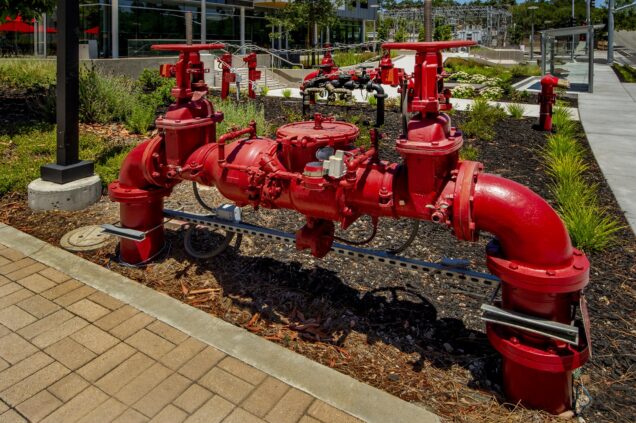Backflow preventers are an essential component of any plumbing system. They play a crucial role in keeping potable water clean and safe for consumption. In this article, we will discuss what backflow preventers are, how they work, and why they are necessary for your plumbing system.
Water is essential to life, providing hydration and supporting ecosystems. However, it can also be a conduit for pollutants, contaminating clean water sources and posing health risks. That’s where backflow preventers come into play.
These devices are crucial in protecting our water supply by preventing contaminants from flowing back into the clean water system, ensuring that the water we consume remains safe and pure. Let’s dive into the specifics.
What are Backflow Preventers, and Why are They Important?
Backflow preventers are mechanical plumbing devices installed in your home’s plumbing system to prevent contaminated water from reversing direction and flowing back into your clean water supply.
They are crucial because they protect you and your family from the risks of contaminated water caused by backflow incidents—situations where the flow of water reverses due to changes in pressure.
Implementing backflow preventers in your plumbing system offers numerous benefits, including:
- Protection of Drinking Water: Ensures that your potable water remains uncontaminated and safe for consumption.
- Health Safety: Prevents exposure to harmful bacteria, chemicals, and pollutants that can cause serious illness.
- Regulatory Compliance: Helps meet local and state regulations that often require the installation of backflow prevention devices in residential and commercial properties.
- Cost Savings: Protecting the overall plumbing system from contamination and potential damage reduces the risk of expensive repairs and replacements.
- Peace of Mind: Assures that your water supply is protected against unforeseen backflow incidents and contamination risks.
Understanding Backflow
Backflow can occur due to two main conditions: back pressure or back siphonage. Back pressure occurs when the downstream pressure is higher than the supply pressure, while back siphonage occurs when there is a negative pressure in the supply line.
Both conditions can allow contaminants to enter the clean water supply, posing serious health hazards, such as contamination with human waste, pesticides, or other hazardous materials.
Types of Backflow Preventers
Several types of backflow preventers are available to homeowners:
- Air gap: This involves leaving a vertical space between the water outlet and the flood level of a fixture, ensuring that there is a break in the physical connection so contaminants can’t siphon back into the clean water supply. It’s a simple yet highly effective method of backflow prevention.
- Double check valve assembly (DCVA): Consists of two check valves in series, designed to prevent both back pressure and back siphonage. This assembly provides a redundant layer of protection, as the second valve offers a backup in case the first one fails, making it suitable for a variety of applications.
- Pressure vacuum breaker (PVB): This device protects against back siphonage only and is typically used in lawn irrigation systems. It includes a check valve and an air inlet valve that opens to break the vacuum if negative pressure is detected, preventing contaminated water from being drawn back into the system.
- Reduced pressure principle assembly (RPZ): This is the most effective type, providing protection against both back pressure and back siphonage even if either check valve fails. This assembly includes two check valves and a pressure relief valve between them that opens to discharge water if the pressure increases to a hazardous level, ensuring maximum safety and reliability.
The Role of Backflow Preventers in Protecting Water Quality
Backflow preventers are pretty close to what would constitute the role of guardians of public health in our homes. By preventing reversed flow in pipes, they help maintain the sanitation of our drinking water by keeping potential contaminants at bay. With clean drinking water a top priority for health, these devices could not be more important.
Importance of Backflow Preventer Maintenance
Backflow preventers require regular maintenance to keep working correctly. Particles and debris can cause valve malfunctions, and worn-out seals or springs may cause leaks or failure to close. Regular inspections by certified plumbers can detect such issues before they lead to contamination.
How to Check for Backflow Preventer Issues
Homeowners should look for signs of leakage or listen for unusual sounds coming from the backflow preventer. If they suspect a malfunction, they should immediately contact a professional plumber who can perform a thorough evaluation.
Professional Installation and Inspection
For the safety and compliance of your plumbing system, it’s vital to have backflow preventers installed and maintained by a professional, licensed plumber.
These experts can ensure proper device installation according to local building codes and regulations and conduct annual backflow testing and maintenance required by many municipalities.
Without a robust defense against backflow, our homes would be exposed to a multitude of contaminants. Backflow preventers are essential components of a strong home plumbing system, ensuring the clean water that nourishes us remains uncontaminated.
Regular maintenance and professional inspections support the performance of these systems, keeping your home safe.
Reach Out To Our Team Starting Today
Is your plumbing system armored against the invisible threat of contamination? Protect your family’s health by ensuring that your backflow preventers are properly installed and maintained.
Schedule an inspection with a licensed plumber from our team here at Mission Mechanical today by calling 317-350-0188, and rest assured that your drinking water is safeguarded against backflow. Defend your clean water – act now!




